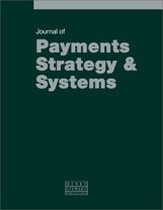The role of virtual currency schemes in the modernisation of retail payments
Abstract
The intriguing phenomenon of virtual currency schemes deserves to be analysed, also from the perspective of the tasks of a central bank, particularly with regard to promoting the smooth operation of payment systems. This paper tries to find an answer to the questions of whether virtual currency schemes are relevant for central banks and whether one can learn from their emergence. The paper first provides an explanation of virtual currency schemes, ie the combination of a digital representation of value (virtual currency) and the in-built mechanism to transfer units of that value. It then describes the stages of development, the main actors involved and the diversity of virtual currency schemes. Although no one should lightly dismiss their drawbacks, disadvantages and risks, this paper focuses on their potential advantages, which can be found in the areas of usage possibilities, speed, costs and the development of alternative payment solutions. Virtual currency schemes have the potential to become more commonly used for payments if they improve current consumer unfriendliness, technical weaknesses and become less volatile vis-à-vis currencies. Furthermore, elements of the technology could serve as inspiration for traditional payment service providers to offer innovative payment solutions.
The full article is available to subscribers to the journal.
